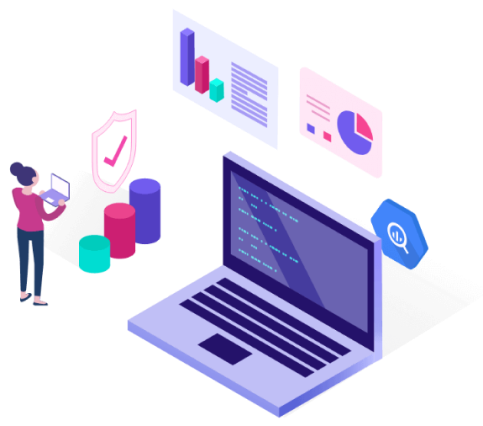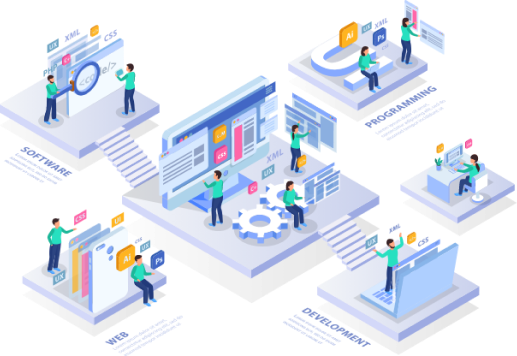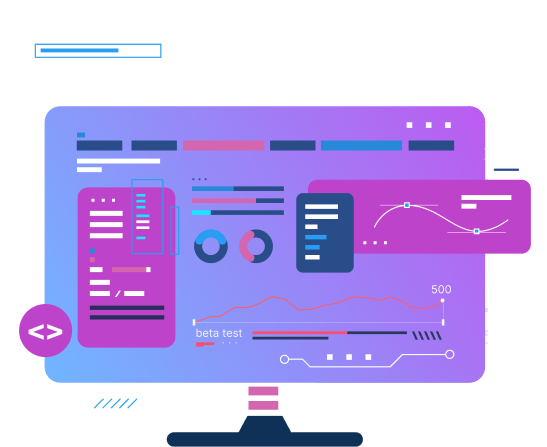

07
CASE STUDY
CLIENT
Need for an architecture that would optimize operating costs on the cloud
Unreliable feature delivery causing business interruptions and unexpected operational inefficiencies
With services tailored to the BFSI segment, Data Security was a top priority for the client
Inability to follow the software release plan resulting in inability to define ADLC (Application Development Life Cycle)
Complexity in debugging different builds for different environments leading to poor code quality
Compromised security caused by these inefficiencies in release plans and poor code quality
Low scalability and low availability of the legacy application
Lack of bandwidth to address these challenges in-house


fiber_manual_record Set up of a streamlined DevOps practice for the client
fiber_manual_record Building a continuous integration (CI) / continuous deployment (CD) pipeline
fiber_manual_record Containerization of two legacy .NET applications to support the DevOps practice
fiber_manual_record Modernization of monolithic architected applications to adopt Cloud native services provided by Azure

Complexity and delays caused by the client’s manual build and deployment process were first addressed
The monolithic architecture used in the erstwhile applications created an elongated feature release cycle
Data security of the existing applications had vulnerabilities due to lack of mobility over the cloud.
Complexity in debugging different builds for different environments
No systematic release tracking and quality control making any RCA time-consuming and inaccurate
No systematic release tracking and quality control making any RCA time-consuming and inaccurate
Technical Solution
Triggering the build pipeline whenever a developer performs a push/merge into a specific branch to allow real-time commits.
Configuration of automated release pipelines, which shortened release cycles.
Adoption of a ‘Gating’ approach to ensure that all QA certified artifacts can be deployed directly into the UAT/production environment.
Integration of SonarQube Quality Gate into the build cycle to automate a zero-defect code quality policy at the initial phase of the build pipeline.
Training of the ML algorithm was performed based on solution descriptions from the providers and will continue on an ongoing basis
Implementation of a ‘Build Once, Deploy Many’ approach, making the deployment process simpler, more repeatable, and easier to debug.
Creation of customized workflow triggers within Azure build and release pipelines calling for explicit approval of the Project Manager or Product Owner.
The algorithm also understands the solution descriptions submitted, and automatically moderates whether to list them on the portal or not
Migration of the two legacy applications into fully managed container services.
Deployment of the containerized apps without needing to manage complex infrastructur.
Infrastructure automation with Terraform, using an Infrastructure as Code (IaC) approach to automatically provision the required resources.


Elimination of 5 build release engineers and 2 support engineers, resulting in a team of 2 instead of 7. This is the result of automation of the CI/CD process reducing the need for support and maintenance.
Faster time-to-market ensured.
Streamlined QA speeds up the development release cycle, which enables faster feature release.
Code quality assurance across different scenarios, pre-empting any negative user experience and ensuring the highest possible customer satisfaction and retention.
Optimization of time spent by resources by eliminating more than 70% of the time spent on a typical deployment process.
Achievement of complete accountability of all code commits, resulting in a simplified, faster compliance/audit process.
All these three activities helped with: Reduction of cost, Enhancement of security with the implementation of K8 clusters. Simplification of deployment architecture, resulting in minimal person-hours for maintenance.

Get in Touch
 Azure API
Management
Azure API
Management
 Azure
Kubernetes Service (AKS)
Azure
Kubernetes Service (AKS)
 Azure App
Service
Azure App
Service
 Azure
Storage Account
Azure
Storage Account

 Ngnix
Ingress
Controller
Ngnix
Ingress
Controller

Over 10 services of the legacy applications were migrated to Kubernetes, modernizing them for easier future deployment, maintenance and further development. This resulted in overall cost savings of 48.7%.
Istio service mesh paired with Kubernetes has delivered on easy deployment, load balancing and security. Prior security vulnerabilities were a ‘real’ threat, this has been eliminated completely.
Terraform has enabled automation of infrastructure provisioning and management, eliminating 7 resources in total.
These high-cost IT personnel are now freed up to focus on client projects, better justifying their cost to the company and reducing overall attrition.
The reduction of unproductive cost led to positive business metrics for the business units specifically benefitting from the re-architecture of the concerned applications.

With CloudNow’s Expert Teams in Your Corner.